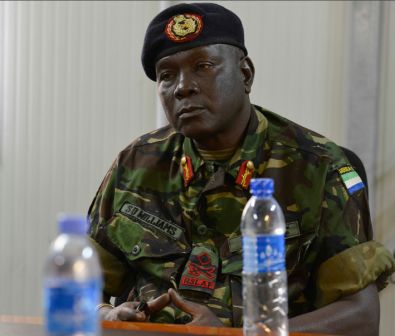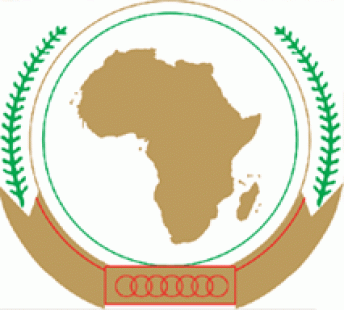Somali piracy: in search of remedies for a global malady
Twenty years ago, when the government of Somalia collapsed, few imagined that the country’s ongoing state of lawlessness would eventually spawn piracy on such a scale that the security of the western Indian Ocean region could be threatened. At first, many assumed that pirate attacks on passing ships could be quickly stifled. But the problem has grown into a global malady that so far has warranted seven United Nations resolutions, one of which authorized “all necessary means to repress piracy and armed robbery at sea.” (Photo: Suspected Somali pirates are apprehended by a patrol of the European Union Naval Force Somalia (EUNAVFOR), one of several initiatives to combat piracy against international shipping off the coast of Somalia. Credit: EUNAVFOR)
According to the UN’s International Maritime Organization (IMO), the problem is a global one, with 276 acts of piracy or armed robbery against ships reported worldwide in 2010. With failed attempts added, the total climbed to 489, a 20 per cent increase from 2009. Although the South China Sea suffered the most attacks, piracy off East Africa, much of it carried out from Somalia, came in second.
Looking only at attacks in international waters, East Africa was well in the lead in 2010, reports the IMO. The only lives lost that year were during East African attacks, while the number of crew members taken hostage there, usually for ransom, reached 629, far higher than anywhere else. According to the International Maritime Bureau, a piracy reporting centre based in Malaysia, some 54 crew members and passengers have been killed worldwide since 2006.
The economic losses are also enormous. The US-based non-governmental One Earth Future Foundation, in a recent study on naval piracy, estimated that Somali pirates extorted some $177 million in ransom in 2009 and $238 million the following year. Including the costs of higher insurance premiums, re-routing ships, anti-piracy security and the impact on regional economies, the total annual costs may range between $7 billion and $12 billion, the study finds.
Justifications
Some arrested Somali pirates and senior officials have sought to justify the explosion of piracy off East Africa by citing illicit activities by foreign vessels off the Somali coast. Somali fishermen have long complained that foreign ships have been hurting their livelihoods by over fishing nearby waters, often with large illegal nets.
Some have also claimed that toxic wastes have been dumped in the Indian Ocean. In 2008, the UN Secretary-General’s then special representative to Somalia, Ahmedou Ould Abdalla, said: “I am convinced there is dumping of solid waste, chemicals and probably nuclear waste. There is no government [in Somalia] and there are few people with high moral ground.” Others argue, however, that there is little evidence to substantiate such views.
In any case, key figures within Somalia’s Transitional Federal Government strongly believe there is a connection. “If the international community wants to limit acts of piracy,” says Deputy Premier Abdulrahman Adan Ibrahim Ibbi, “it has to help Somalis keep illegal foreign fishing and toxic waste dumping away from their coasts.”
Regional action
Whatever the factors that have contributed to Somali piracy, prompt action is needed to counter pirate activities, argue regional government officials, fishing industry executives and shippers. President James Alix Michel of the Seychelles declared in November 2010 that piracy is “the greatest threat that currently exists to fisheries, trade and development in our region. The scourge of piracy is hijacking not only our economy — but the whole of the Indian Ocean.”
Two months later, East African transport ministers urged insurance firms to discourage the payment of ransoms, so as to reduce one of the main incentives for piracy and slow the steady rise in shipping insurance costs.
Courts in Kenya and the Seychelles are actively prosecuting pirates who have been captured. According to the UN Office on Drugs and Crime, Kenya, the Seychelles and the semi-autonomous region of Puntland in Somalia have the highest number of convicted pirates in the world. As of April 2011, Kenya and the Seychelles were holding 177 pirates.
“Kenya has had a strong tradition of a solid Commonwealth legal system,” notes Professor David Crane of Syracuse University in the US. “There is a capacity and certainly they do have an ability to try pirates.”
Sharing the burden
Yet governments in the region have very limited resources, whether for prosecuting suspected pirates or trying to safeguard regional waters with tiny national navies. “We are doing more than our part,” notes President Michel. “Piracy is exploiting the weaknesses that exist in global governance. It exists, not only because of the dire state of Somalia, but also because of the inaction of the international community.”
Andrew J. Shapiro, the US assistant secretary for political and military affairs, agrees that African countries need more support, given the complexity of the challenge. “Prosecuting pirates can be an incredibly complex proposition in today’s globalized world,” he said in a paper on anti-piracy policy presented last year to an American Law Review symposium. “The realities of international shipping and global commerce are such that in any given piracy case you could have suspected Somali pirates intercepted and apprehended by a British naval vessel after trying to attack a Liberian-flagged ship, owned by a Canadian company, crewed by Ukrainians, Indians, and Filipinos, with a Russian captain and carrying cargo owned by a Turkish company, en route for delivery to a company in Dubai. And the case could be taking place in a courtroom in yet another country, like Kenya or the Seychelles, which are both currently prosecuting piracy cases. The logistical and diplomatic challenges presented by such a scenario are immense.”
Referring specifically to Kenya and the Seychelles, Mr. Shapiro continued, “The burden currently shouldered by these countries must be shared more broadly both within and beyond the piracy-affected region. The cost of this crime is borne globally. The cost of combating and defeating it should likewise be borne by many states in all corners of the world.”
Both Kenya and the Seychelles have signed pacts with the European Union (EU) and the US to try suspected Somali pirates captured elsewhere in return for financial and security assistance.
The US, EU and others have also stepped forward with aggressive counter-piracy naval operations. These include the US-led Combined Task Force and the EU Naval Force Somalia (EUNAVFOR). “My orders are clear,” says Rear Admiral Juan Rodriguez, the EUNAVFOR force commander, “to protect vulnerable shipping, deter and prevent acts of piracy, protect vessels of the World Food Programme . . . and the African Union Mission in Somalia.”
To better coordinate these and other initiatives, a Contact Group on Piracy off the Coast of Somalia has also been established. It brings together some 60 countries, as well as the UN, IMO, North Atlantic Treaty Organization and African Union.
Change on the ground
Ultimately, whatever measures are taken to contain Somali piracy on the high seas, long-term solutions must address the source of the problem: the political instability and ongoing warfare within Somalia itself.
“You cannot hope to tackle piracy in any kind of serious way without change on the ground in Somalia,” argues Roger Middleton, a maritime expert with the Chatham House think-tank in London. “This is not started on the ocean, and it’s not a problem that can be solved on the ocean.”
Regional political leaders agree. “The solution to ocean piracy,” says Ugandan President Yoweri Museveni, “is to ensure a stable government in Somalia.”
By Wanjohi Kabukuru, Nairobi
Courtesy of Africa Renewal www.un.org/AfricaRenewal
Stay with Sierra Express Media, for your trusted place in news!
© 2011, https:. All rights reserved.






